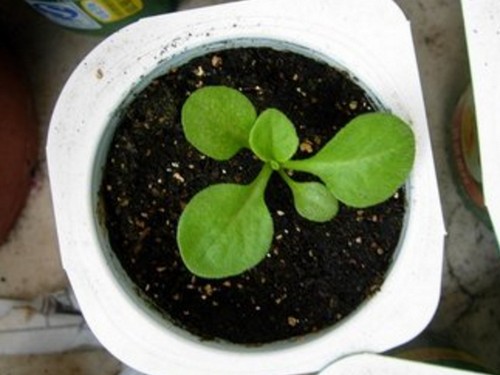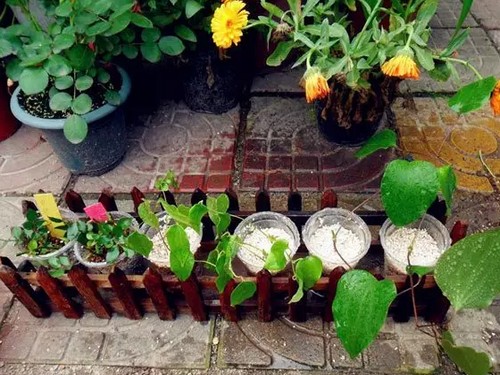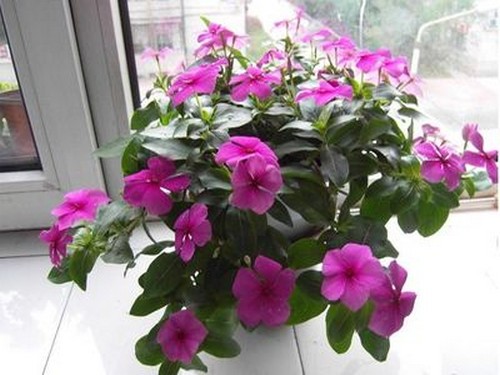Methods of sowing and raising seedlings of potted daisies
Daisies are gradually loved by flower growers, and potted indoors. In order to grow daisies with beautiful colors, the way to sow daisies is extremely important, so how to sow daisies and raise seedlings?

Sowing potted daisies:
Daisy seeds are very small, with 4900-6600 seeds per gram, and family sowing is more than in September. There is a big difference in temperature between the north and the south, so families in the south mainly sow seeds in August.
Pot sowing should choose loose, breathable flowerpots. The flowerpot is disinfected and covered with vermiculite to cover a thin layer, so that the seeds should not be seen. Daisies can be transplanted once when they have 2-3 true leaves. The suitable pH value of sowing medium is 5.86.5, and the EC value is 0.50.750.After sowing, the temperature is 18-20 ℃, the humidity is 80-90%, and it can germinate in 5-8 days.
Keep indoor temperature of 18-22 ℃ and humidity of 80-90% after sowing. The radicle grows in a week or so. Still want to keep the medium moist after germination, need to be placed on the balcony to give light, but the germination time can not be too strong, to appropriate shade. From July to August, it is still necessary to cool down by shading around noon.
Cultivate strong seedlings:
1. Seedbed preparation: the seedbed soil should be fine and smooth, apply base fertilizer, spread evenly, plough and flatten the border surface per square meter, pour sufficient bottom water before sowing, and sprinkle a thin layer of sifted fine soil on the border surface after underwater infiltration, and then sow seeds.
2. Seed treatment: select good varieties and mix the seeds with 800-fold solution of new high-fat membrane (which can ward off underground diseases and insects, isolate virus infection, do not affect germination and swelling function, strengthen respiratory intensity, and improve seed germination rate).
3. Seedling stage management: seedlings come out completely, remove curtains, grow two or three leaves for the first time, bare roots without persistent soil, border soil needs to be moist, timely watering, loosening soil to preserve soil moisture squatting seedlings. When the seedlings produce 3-4 true leaves, transplanting with soil blocks once or twice can promote a large number of lateral roots and prevent overgrowth. Spraying new high-fat film after transplanting can effectively prevent aboveground water from evaporating and seedling water from transpiration, isolate diseases and insect pests, shorten the slow seedling period and improve the survival rate.
Growth management:
1. Weeding, watering and fertilization: after planting slow seedlings, weeding should be carried out to enhance soil permeability. After planting, watering should be done every 7-10 days. Do not need to fertilize too frequently, apply dilute dung water every 3 weeks, ploughing once a month, and stop fertilizing after flowering. Spray new high-fat film to preserve fertilizer and soil moisture.
2. How can flowering be colorful and fragrant? spraying Zhuangtiling at the bud stage can make the buds strong, the petals enlarged, the flowers colorful, the fragrance strong and the florescence prolonged.
3. Pest control: diseases mainly include leaf blight, chrysanthemum longicorn beetles, cotton aphids, Qichao, ground tiger, green leafhopper and other diseases. Diseases and insect pests should be mainly prevented, and targeted drugs should be sprayed with new high-fat film to greatly improve the effective components of pesticides. Not afraid of sun exposure and evaporation, can adjust the absorption of water-saving, drought and rain prevention.
Time: 2019-06-11 Click:
- Prev

Cutting technique of potted Clematis
From the little rookie who came into contact with clematis to being able to cut live seedlings, I have also made a lot of painstaking efforts to check the experience of the great gods everywhere. I am not ashamed to ask, and I am also constantly groping. I hope to find out the cutting method of clematis which is suitable for my place.
- Next

Propagation methods of Catharanthus roseus
Catharanthus roseus has a long flowering period, beautiful colors and beautiful posture, and the varieties cultivated in recent years are getting bigger and bigger, so it is very suitable to be a bonsai ornamental plant, which has an unexpected effect in home layout. Catharanthus roseus prefers warm, sunny and moist, fertile sandy loam. In hot summer, it is not suitable to be exposed to strong light.
Related
- Fuxing push coffee new agricultural production and marketing class: lack of small-scale processing plants
- Jujube rice field leisure farm deep ploughing Yilan for five years to create a space for organic food and play
- Nongyu Farm-A trial of organic papaya for brave women with advanced technology
- Four points for attention in the prevention and control of diseases and insect pests of edible fungi
- How to add nutrient solution to Edible Fungi
- Is there any good way to control edible fungus mites?
- Open Inoculation Technology of Edible Fungi
- Is there any clever way to use fertilizer for edible fungus in winter?
- What agents are used to kill the pathogens of edible fungi in the mushroom shed?
- Rapid drying of Edible Fungi

